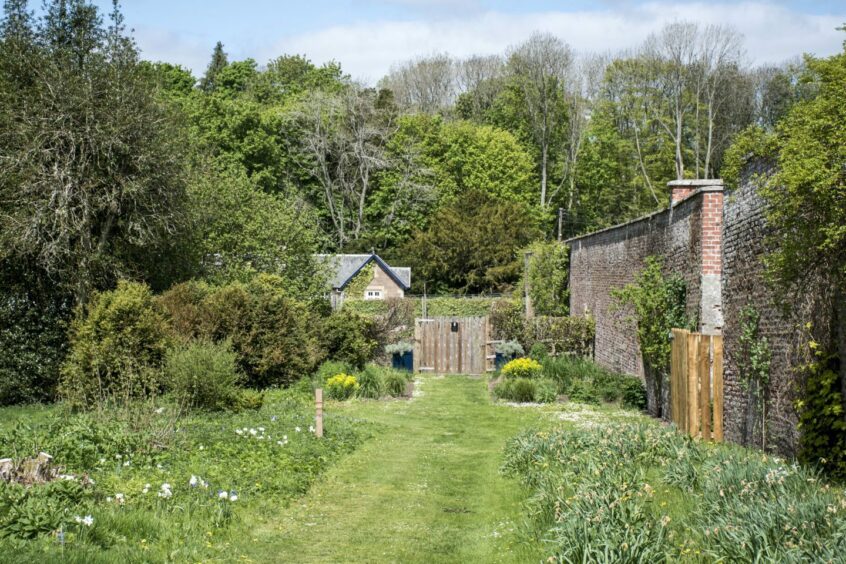The other week I had the pleasure of spending a couple of hours in the company of members from the Ballater Royal Horticultural Society.
They headed south to join me for a tour of the gardens and grounds of Scone Palace where I’m the head gardener.
Meeting and chatting with fellow gardeners is definitely one of the pluses I get on the back of being a “weel-kent” face from the privilege of getting to write gardening words for you each week.
How well does your garden grow?
Something I hope never changes however my career evolves in the future.
I love hearing from everyone else about what you grow and all the challenges, failures and success you have.
Gardening can be so unpredictable sometimes.
You think you’re doing everything right and still have no luck keeping a plant alive only then to hear a tale of another who’s chucked a same plant in a random corner and it’s taking over the place.
That’s gardening for you!
The weather on the day was one of those warm and beautiful blue sky, late summer days.
During my introduction to the group I began by saying that meant the day started with the coldest morning so far.

The thermometer in the walled garden showing a temperature of 7 degrees.
I then had one of those moments when I realised I was asking for sympathy from the wrong gardeners.
That temperature for those guys is just your typical summer morning where they garden.
I was soon put in my place they being in no mood to hear my whining.
I was feeling a wee bit cold now the start of autumn was here!
Brian loved the gardening chat
I loved the chat going round.
If I stopped to talk about a tree I would get to hear about a favourite of theirs.
We shared stories of my favourite climber Clematis tangutica ‘Bill McKenzie’, just now covered in golden yellow, dropping-flowers draping over a 1.5m castellated wall at Scone but so rampant with a Ballater gardener that she has to hack into it with her secateurs.
I cut this down to 15cm from the ground each spring but only after enjoying the sight of the fluffy seed heads this plant produces over the winter months.
The next stop was our kitchen garden currently bursting with produce ready for picking and colour coming from dahlias and nasturtiums.
They’re both looking good but have been suffering from infestations of blackfly, some of the stems of the former completely being covered in them.
This is not something that surprises me with nasturtium.
In fact that’s what I want to happen growing this as a sacrificial, companion plant on the outskirts of the vegetable plots, hoping the black aphids will infest the nasturtium foliage and leave the likes of the beans alone.
That’s as bad as I’ve seen black aphid as a problem in the garden making me realise I’ve yet to see one ladybird this year, a natural predator of this pest.
All these things come in cycles though
I’m wondering there’s not too many to be seen at the moment because they have done their job so well the past few years?
What I’m hoping now is that there appears to be an endless supply of food for not only ladybirds but beetles and hoverflies.
I hope I shall see their numbers increase again next year.
I was keen to learn what pests were a problem for these gardeners in the east of the Cairngorm mountains and it appears ‘thunder flies’ are the problem.
These are tiny thrips, other than the damage the cause they are hard to see though you could shake the plant foliage over a white piece of paper to reveal them.
I suspect that’s what’s affecting some gladioli I have in pots this year causing white dots over the foliage, the foliage just simply look ill.
I like to avoid chemicals so next year, after tipping the dahlias out of the pot and cleaning the corms before storing them in a cool, frost free place over winter, I’ll be inspecting the foliage regularly from much earlier in the season for signs of thrips.
If I suspect they are a present I’ll go for biological control and apply some nematodes.
Keeping gardening traditions alive
When we departed, what I admired most about this gardening group is how they are tackling the problem of dwindling numbers at their annual summer flower show and their attempts to keep this garden tradition of showing and displaying plants from the garden alive.
I’m still keeping my fingers crossed that Calum Clunie on Beechgrove Garden will inspire a new generation of growers and showers.
But failing that, maybe other gardening groups who find themselves in a similar situation can follow the lead of the Ballater RHS.
They invited gardeners in the community to simply bring along one plant in a pot, or display of flowers or veg from their garden, to show and celebrate.
There was only four categories these were all placed into making judging easy, which was carried out out by all those who came along and supported their summer show.
Sounds absolutely brilliant, I’m planning to pop along next year already.














Conversation